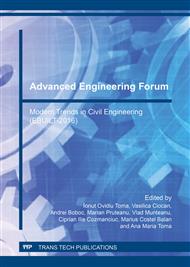p.506
p.514
p.520
p.529
p.537
p.544
p.551
p.557
p.564
A Probabilistic Model to Estimate Cost of Drinking Water Projects in Rural Areas
Abstract:
In Chile there are numerous drinking water projects in rural areas, from which it is possible to extract relevant information that could be incorporated into a learning model based on cases to estimate a particular variable. Among the learning models based on cases are Bayesian networks, which have the particularity to predict a variable and quantify its uncertainty. In this paper, a methodology to build a model based on Bayesian networks to estimate the likely investment cost of a new drinking water project in rural areas is proposed. It has a database of 32 projects built between 2009 and 2014, in the region of Los Rios, Chile. Two Bayesian networks structures were created, each with eight common variables to both. The proposed networks were trained with data extracted from 26 randomly selected projects. The remaining 6 projects were used as a control group to evaluate Bayesian networks and compare their results. When each network was evaluated with the control group, it was observed that in general the predicted results were consistent with those observed in 83% of cases. Finally, it was concluded that the constructed model can estimate the likely investment cost of a new drinking water project in rural areas, quantifying prediction uncertainty, expressing the results in probabilistic terms. This model could become a useful management tool, both companies and government agencies whose mission is to assess, allocate resources, and define projects approval and implementation.
Info:
Periodical:
Pages:
537-543
Citation:
Online since:
March 2017
Authors:
Keywords:
Price:
Сopyright:
© 2017 Trans Tech Publications Ltd. All Rights Reserved
Share:
Citation:


